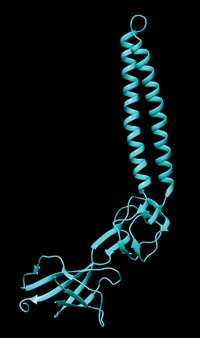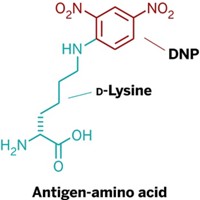Advertisement
Grab your lab coat. Let's get started
Welcome!
Welcome!
Create an account below to get 6 C&EN articles per month, receive newsletters and more - all free.
It seems this is your first time logging in online. Please enter the following information to continue.
As an ACS member you automatically get access to this site. All we need is few more details to create your reading experience.
Not you? Sign in with a different account.
Not you? Sign in with a different account.
ERROR 1
ERROR 1
ERROR 2
ERROR 2
ERROR 2
ERROR 2
ERROR 2
Password and Confirm password must match.
If you have an ACS member number, please enter it here so we can link this account to your membership. (optional)
ERROR 2
ACS values your privacy. By submitting your information, you are gaining access to C&EN and subscribing to our weekly newsletter. We use the information you provide to make your reading experience better, and we will never sell your data to third party members.
Biological Chemistry
Tuning In To Microbe Chatter
Method detects protein receptors involved in detecting chemical words bacteria use to communicate
by Sarah Everts
May 9, 2011
| A version of this story appeared in
Volume 89, Issue 19
Eavesdropping on the chemical conversations of microbes requires that researchers keep tabs on a bacterium’s “ears,” namely the protein receptors involved in detecting chemical words. Chemists in Israel have found a way to fluorescently label these receptors in live bacterial cells (J. Am. Chem. Soc., DOI: 10.1021/ja200455d). To develop the label, Michael M. Meijler and his colleagues at Ben-Gurion University of the Negev started with (3-oxododecanoyl)homoserine lactone. Pseudomonas aeruginosa, the bacteria behind many antibiotic-resistant hospital-acquired infections, communicate with one another via this lactone. To covalently link the lactone to the P. aeruginosa receptors that recognize it, the researchers added an isothiocyanate to the end of the lactone’s fatty acid chain. The isothiocyanate traps the lactone on an exposed cysteine residue side chain in the receptors’ binding pocket. They also tagged the lactone with an amino-oxy fluorescent label using aniline-catalyzed oxime chemistry. When the cell was bombarded with the green fluorescent tag, the team found that the labeled receptors were concentrated at the two poles of these long, skinny bacteria.





Join the conversation
Contact the reporter
Submit a Letter to the Editor for publication
Engage with us on Twitter